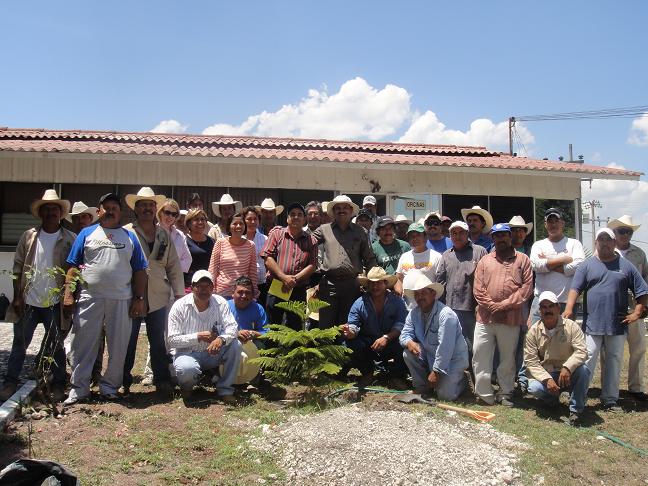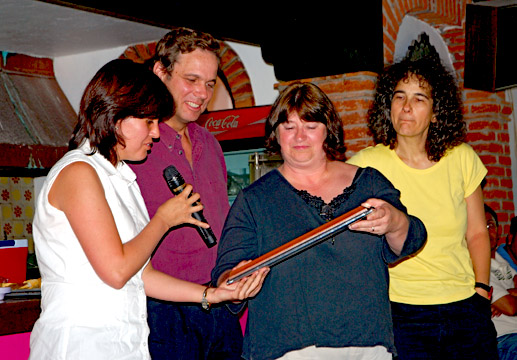GMP director visits Agua Fría and Tlaltizapán
On 22 March 2010, Boddupalli M. Prasanna, the new director of CIMMYT’s Global Maize Program (GMP), spent a fruitful day familiarizing himself with the Agua Fría station, its staff, and the work being done there. The day included meetings with staff assistants to discuss ways to strengthen station research activities and ways to improve work and staff conditions, especially in terms of occupational health and safety issues.
“For us, it is a very important opportunity to interact and to meet our new GMP director,” said Jesús Gónzalez, principal field assistant and lowland tropics program worker representative. “He is very enthusiastic and willing to listen to our concerns. We will continue to put in our best efforts to contribute to CIMMYT’s mission.”
Prasanna toured fields and facilities, meeting with staff from several different programs and was accompanied by Félix San Vicente, maize breeder, George Mahuku, senior maize scientist/pathologist, José Crossa, biometrician and distinguished scientist, and Reymunda Labuguen, GMP administrator. Leocadio Martínez, research assistant B, showed Prasanna the work being done on double haploids (DH) and explained the challenges of implementing DH technology. Also highlighted was the work CIMMYT is doing to develop tropically adapted haploid inducer lines, and the search for new phenotypic markers to increase efficiency.
The group also met with the lowland tropical breeding program, where a wide variety of elite inbred lines are in the final testing and characterization stage before they are released by CIMMYT. Discussion with the pathology team included details of the disease nurseries and efforts to identify suitable sources of resistance to different maize diseases.
 “I am very impressed with the level of commitment and professionalism shown by the different groups working at Agua Fría and how the trials were being managed,” Prasanna told Agua Fría staff.
“I am very impressed with the level of commitment and professionalism shown by the different groups working at Agua Fría and how the trials were being managed,” Prasanna told Agua Fría staff.
“I will do all I can to help you do your work in an efficient manner.”
Prasanna also visited the Tlaltizapán research station on 29 March, accompanied by Labuguen and Jill Cairns, maize physiologist. He visited the various program fields and attended a small ceremony for the planting of an Auracaria tree in honor of Hugo Córdova.
 Coworkers, family, and friends gathered on 23 October 2009 in El Batán’s Rincón Mexicano to say goodbye to Kevin Pixley, former associate director of the Global Maize Program (GMP), who will start work at the University of Wisconsin in November. He will remain involved with CIMMYT activities as a partnered scientist and will dedicate 50% of his time to HarvestPlus, an international, interdisciplinary program to alleviate nutritional deficiency through breeding micronutrient-enriched staple foods.
Coworkers, family, and friends gathered on 23 October 2009 in El Batán’s Rincón Mexicano to say goodbye to Kevin Pixley, former associate director of the Global Maize Program (GMP), who will start work at the University of Wisconsin in November. He will remain involved with CIMMYT activities as a partnered scientist and will dedicate 50% of his time to HarvestPlus, an international, interdisciplinary program to alleviate nutritional deficiency through breeding micronutrient-enriched staple foods.